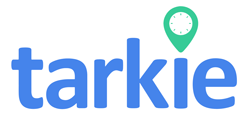Ever thought about how much your business could save with real-time attendance reporting? As companies grow, the need for good attendance management systems is clear, for HR and payroll teams in the Philippines. With high operational costs and strict rules, many small and medium businesses see real-time reporting tech as a must-have.
Good time-tracking software makes workforce management better, payroll more accurate, and helps follow labor laws. It’s said that bad payroll processes cost up to 75 hours per pay cycle. This makes the need for easy solutions very clear. With real-time payroll, workers can see their pay right away, helping with budgeting and job happiness. The move to automated systems shows a growing understanding of the costs of time theft and mistakes.
Looking into the HR benefits of these modern payroll systems shows that accurate data is key. It helps avoid mistakes and lets HR teams make quick, smart choices. Companies using real-time attendance reporting often see a 20% boost in productivity, thanks to better use of resources and staff.
Key Takeaways
- Real-time reporting boosts efficiency for HR and payroll teams.
- Automated systems cut down on payroll mistakes and risks.
- Workers get to see their pay, improving their financial health.
- Companies can see a 20% productivity gain with better resource use.
- Real-time attendance helps fight time theft and unpaid overtime.
The Importance of Real-Time Attendance Reporting
Real-time attendance reporting is key for better workforce management and HR decisions. It helps track employee hours accurately. This lets HR teams monitor who’s working and who’s not, and it gives them data to make things run smoother.
Using advanced systems can really help in managing human resources. It can make a big difference in how things get done.
Enhancing Workforce Management
Good workforce management needs real-time attendance reports. These reports help HR leaders see who’s working well and who’s not. They can also spot who’s always missing work.
By using automated systems, companies can cut down on mistakes. Studies show a big drop in errors and a 25% boost in efficiency. This makes it easier to plan who works when and where.
Timely Decision-Making for HR Teams
HR teams make better decisions with real-time attendance data. They can quickly deal with issues like who’s not at work. This helps them make fast, smart choices about staffing and keeping things running smoothly.
Working with payroll systems also helps avoid mistakes. Companies using these systems can pay their employees on time. This makes everyone happier and more productive.
Real-Time Reporting, HR Benefits, Payroll Systems
Real-time reporting changes how we handle payroll systems. It brings big wins in payroll accuracy and HR benefits. By adding real-time attendance data to payroll systems, businesses see a big jump in data quality.
This move cuts down on mistakes, letting companies reduce errors in manual entries. It’s a big win for payroll systems.
Improvement in Payroll Accuracy
Automated payroll systems can cut errors by up to 90%. This means employee pay is always right. The smooth flow of data between HR and payroll boosts efficiency by 25%.
Real-time reporting also means quick fixes. This keeps payroll accurate all the time.
Streamlined HR Processes
Automated systems make HR teams more efficient. They spend less time on paperwork and more on growth plans. This is a big win for HR.
Cloud-based payroll solutions can also save up to 50% in costs. This helps with budgeting. It leads to happier, more productive employees.

Boosting Employee Engagement Through Transparency
Real-time attendance reporting boosts employee engagement by creating a transparent culture. When employees can easily see their attendance records, trust grows. This immediacy makes them feel more connected to their work and the company.
Creating a Trusting Work Environment
Transparency in attendance reporting builds trust in the workplace. Open communication lets employees share their thoughts and ideas freely. This leads to better teamwork and more creative solutions.
Engaged employees take more pride in their work. This makes the workplace a place of innovation and success.
Offering Self-Service Features
Self-service features in attendance reporting boost employee engagement. Employees can manage their attendance, feeling more in charge. This leads to higher job satisfaction and fewer employees leaving.
Companies in the Philippines see better morale and accountability with these systems. It’s a win-win for everyone.
Tools that make attendance records easy to access help keep employees. They feel valued and stay committed. Investing in transparency and self-service features creates a better work environment. For more information, see this resource on integrating timekeeping software.
| Key Factors | Impact on Employee Engagement |
|---|---|
| Transparency | Builds trust, encourages feedback, and promotes innovation. |
| Self-Service Features | Enhances autonomy, accountability, and increases job satisfaction. |
| Access to Information | Empowers employees to track their records, leading to improved morale. |
| Regular Feedback | Strengthens relationships and ensures concerns are addressed promptly. |
Cost Savings and Efficiency Improvements
Businesses are now seeing the value of using real-time attendance systems. These systems help save money and make things more efficient. This makes running a business smoother and cheaper.
Reducing Time Theft and Overhead Costs
Real-time attendance tracking helps cut down on time theft and payroll mistakes. It makes sure employees only get paid for the hours they work. This leads to lower costs for running the business.
It also helps avoid fines for not following rules. This makes the investment worth it.
Automated Systems vs. Manual Processes
Switching to automated payroll systems makes things run better. It cuts down on mistakes found in old ways of doing things. Businesses using these systems work faster and more efficiently.
They can update payroll in real-time. This helps manage workloads and use resources better.
With the benefits of saving money, working better, and lower costs, it’s a good reason to move to automated systems.

Complying with Labor Laws and Regulations
Following labor laws is key for businesses to succeed. Keeping accurate records is vital for employee rights and audit prep. In the Philippines, companies face many rules on work hours, pay, and benefits.
Knowing and following these laws helps avoid legal trouble. It also improves a company’s image.
Maintaining Accurate Records for Audits
Accurate records are crucial for audits. Automated systems help track work hours, avoiding pay disputes. HR can spot issues early with real-time reports.
Having all records in one place makes audits easier. It keeps data safe and easy to find, making everything transparent.
Reducing Legal Risks and Penalties
Not following labor laws can hurt a business a lot. It can lead to fines, bad reputation, and legal costs. Good timekeeping helps avoid these problems.
Using modern technology helps keep things running smoothly. It also protects against legal issues.
Utilizing Data Analytics for Better Insights
In today’s fast-paced business world, using data analytics is key to improving performance. Real-time reporting systems give us deep insights into how people show up and how productive they are. HR teams can use this info to make better decisions, making the workplace more efficient.
Identifying Attendance Patterns
Advanced data analytics tools help spot attendance trends, like who’s always absent or who works a lot of overtime. Knowing these patterns can lead to big improvements. For example, if many people are missing work, you can figure out why and fix it.
These insights also help with planning who to hire and how much to pay them. This way, you can save money on labor costs.
Researching Employee Productivity Levels
Data analytics gives a clear picture of how productive employees are. It shows how attendance affects performance. This lets businesses pay people based on how well they do their job.
This approach helps set clear goals and KPIs. It makes managing talent better and boosts employee happiness.
| Data Analytics Application | Impact on Workforce Management |
|---|---|
| Identifying Attendance Patterns | Helps address issues like absenteeism, optimizing labor costs |
| Monitoring Employee Productivity | Correlates productivity with compensation, enhancing employee satisfaction |
| Forecasting Staffing Needs | Enables better adjustment of hiring and retention strategies |
| Benchmarking Turnover Rates | Aids in measuring the financial impact of retention strategies |

Integration with Existing Payroll Systems
Connecting real-time attendance systems with current payroll solutions boosts efficiency. It ensures smooth data sharing, reducing errors from manual entries. For example, inefficiencies in payroll can cost companies up to 30% of their revenue each year.
Seamless Data Transfer for Improved Accuracy
Smooth data integration cuts down payroll processing time. Companies with integrated Human Capital Management (HCM) systems see a 70% reduction in this time. This integration also cuts down on errors in payroll, improving financial reports by 90%.
Eliminating Manual Entry Errors
Automating data transfer cuts down manual entry errors by up to 50%. Without integration, systems can face higher compliance risks. Integrated solutions offer real-time connectivity, improving workforce metrics and budget forecasting.
| Benefits of Payroll System Integration | Impact | Metrics |
|---|---|---|
| Reduction in Payroll Processing Time | Increased Efficiency | Up to 70% |
| Decrease in Payroll Errors | Enhanced Accuracy | Up to 80% |
| Reduction in Compliance Issues | Risk Mitigation | 20% Decrease |
| Labor and Tax Compliance | Improved Adherence | Higher Compliance Rates |
| Administrative Work Savings | Time Efficiency | 30% Reduction |
Real-Time Reporting and Remote Workforce Management
More businesses are moving to remote work. Keeping a remote team productive and engaged is key. Real-time reporting helps a lot with this.
It lets HR teams track who’s working and when. This helps plan better and get tasks done faster.
Impact on Remote Employee Productivity
Real-time reporting boosts productivity by up to 30% for companies using good HRIS systems. It helps managers give tasks at the right time. This keeps team members focused.
Companies that track performance well see a 25% jump in team engagement. Real-time data is essential for keeping everyone motivated and on track.
Facilitating Communication Across Teams
Good communication is crucial for remote teams. Real-time reporting shows who’s available, making teamwork better. It cuts down on delays in getting things done.
Using these tools helps teams stay in sync. It’s important for reaching shared goals. Self-service features also make things easier, cutting down on work by about 40%.

Scalability of Attendance Reporting Systems
As businesses grow in the Philippines, they need scalable attendance systems. These systems must adapt to growth and meet different workforce needs. They help manage more employees and cater to various industries, keeping attendance management effective.
Accommodating Business Growth
Scalable attendance systems support business growth well. They grow with the company, avoiding problems during hiring or restructuring. With flexible attendance solutions, tracking employees stays accurate and efficient, even when the workforce changes.
More automation means fewer mistakes. This lets HR focus on big plans, not just paperwork.
Flexible Solutions for Various Industries
Every industry needs its own attendance system. For example, mobile workers benefit from GPS tracking in systems like Jibble. TeamSense is great for teams that don’t sit at desks, with text-based reporting.
These flexible solutions help all kinds of businesses. They make attendance tracking strong, supporting growth and boosting productivity.
| Feature | Impact on Business |
|---|---|
| Scalability | Handles up to 10,000 employees without performance dips |
| Flexible Attendance Solutions | Customized reporting tools increase operational efficiency |
| Industry-Specific Systems | Address unique requirements of diverse sectors, enhancing productivity |
Scalability helps businesses grow and makes employees happier. Investing in flexible attendance systems shows a commitment to efficient, open, and compliant workplaces. This builds trust and boosts morale among employees.
Conclusion
Real-time attendance reporting brings many benefits to HR and payroll teams, mainly in small and medium-sized businesses. It makes HR and payroll work more efficient and accurate. This technology lets companies make quick, informed decisions, boosting employee happiness.
It also makes the workplace more open and trustworthy. Employees can handle their own data, making things easier and more engaging. This is key as businesses face new challenges and laws.
Using real-time attendance reporting makes a company’s operations better and its workers happier. As businesses in the Philippines grow, these systems will be crucial for success.
